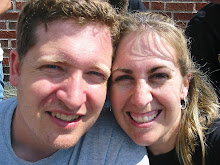So I got my minigenes in the last week and proceeded to go through the cloning proceedure once again - no luck. I knew it was going to be a difficult experiment. I am attempting to insert a small sequence (only 51 base pairs) into a large (7900 base pairs) plasmid. This sequence is called a nuclear export sequence. Essentially it is like a zip code. It directs the gene product (a protein) to stay outside the nucleus. We are inserting it upstream of a gene I have already cloned into a plasmid called p75. P75 is a neurotrophin receptor that plays several different roles depending which neurotrophin it binds to. The dogma is that p75 is a death receptor. Upon binding to the proper ligand, the intracellular portion of the receptor is cleaved and transported to the nucleus where it causes the cell to undergo apoptosis (programmed cell death). We want to prevent the intracellular portion from entering the nucleus by attaching this nuclear export signal to the protein. Back to cloning. I was sitting in the temple the other day for a wedding and the thought occured to me that I should attempt to clone p75 into the plasmid containing my NES rather than the other way around. That way I would not have the difficulty associated with trying to drop a very small insert into a large plasmid. What a great idea. So the next day I hustled back into the lab and anxiously pulled up the computer files with my sequences to determine the best method to do the experiment. While examining the sequences I realized that I had made a fundamental mistake when designing the NES. It was such a colossal mistake that even if I had been successful cloning the NES onto the p75 gene, it would have been non-functional. When I ordered the NES, I switched the restriction enzyme sites. Restriction enzyme sites are small (usually 4-6 bp) sequences of DNA that are specific to certain enzymes that will cleave the DNA at those positions. When I cloned p75, I had used PCR to insert a couple of enzyme sites in a specific sequence (EcoRI then SpeI) for the eventual addition of the NES. However, when I ordered the NES, I did so with SpeI first then the NES sequence followed by EcoRI. This means that had I been successful cloning the NES into the p75 plasmid, the NES would have been inserted backward, rendering it unreadable. What a stupid mistake! I am glad I found it. Had it not been for that flash of inspiration in the temple, I would never have realized it until I sequenced the final product. I am really irritated that I have spent so much time, energy, and money on something that wouldn't have worked anyway. I reordered the NES on Thursday and hopefully will be successful with this project soon.
On a happier note, I have a job for at least another five years. We just received word that we were awarded an RO1 grant from the NIH. RO1's are the lifeblood of the biomedical sciences. Faculty members lose their jobs if they fail to get grants. We are very fortunate to have gotten this grant and are breathing much easier. We still had a couple years of funding through other grants but this grant is the big daddy. It will provide us the resources to really start growing and doing better research.

